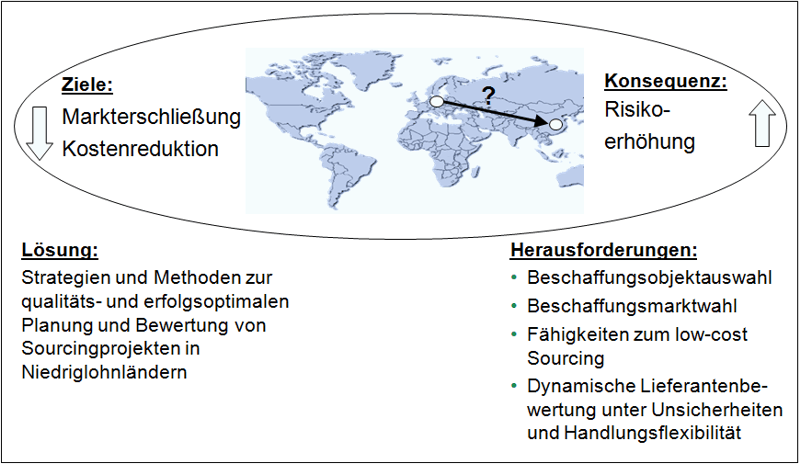q-sourcing - Project
Motivation
| Back |
| The entrance into global purchasing activities is usually performed by SMEs due to concrete reasons. For example SMEs, which run on just-in-time delivery systems and depend strongly on their end customer, must often ensue their customers. However, during this process a comprehensive, strategic planning and evaluation of the sourcing project in the low-cost countries is often not completed. Yet a purchasing project can be the difference between the success and failure of a product when dealing with small or medium lot sizes, and thus has an existential impact on small companies. Especially for the achievement of cost savings while simultaneously maintaining the same quality level is a goal, which can only be achieved through a systematic, methodical, proved and tested approach. For this, a course of action for the quality and profit optimal preparation of sourcing projects is required. It is already determined in the first step of a sourcing project, the allocation of procurement objects to their procurement markets, whether the components will later be successfully supplied or not. For this, intensive preparations are necessary so that the following process steps including the supplier search, selection and development can be effectively executed. However, especially for SMEs, there are only limited resources available in low income countries, and thus due to high expenditures (time, personnel, travel costs), an efficient and effective supplier transport connection is required. Even today, and in particular for small and medium sized enterprises, there is a lack of scientific and practical methods and tools for the structured preparation and implementation of sourcing projects, as well as for suitable evaluation of the available local skills and resources relating to the challenges of global sourcing projects. Open questions remain in this regard, before all with regard to the selection and allocation of procurement objects to their procurement markets, while taking into account strategies, skills and resources of the buying company. Furthermore, there is a lack in methods, which through a change to the product design, make location-orientated manufacturing processes possible. Additionally, a scientific method for dynamic supplier evaluation, which is able to estimate development expenditures and, while also considering uncertainties and operational flexibility, and then use these to offset the cost savings, is not available. This results in SMEs being confronted with a high economical risk, brought by the entrance in to global sourcing markets. |
 |

